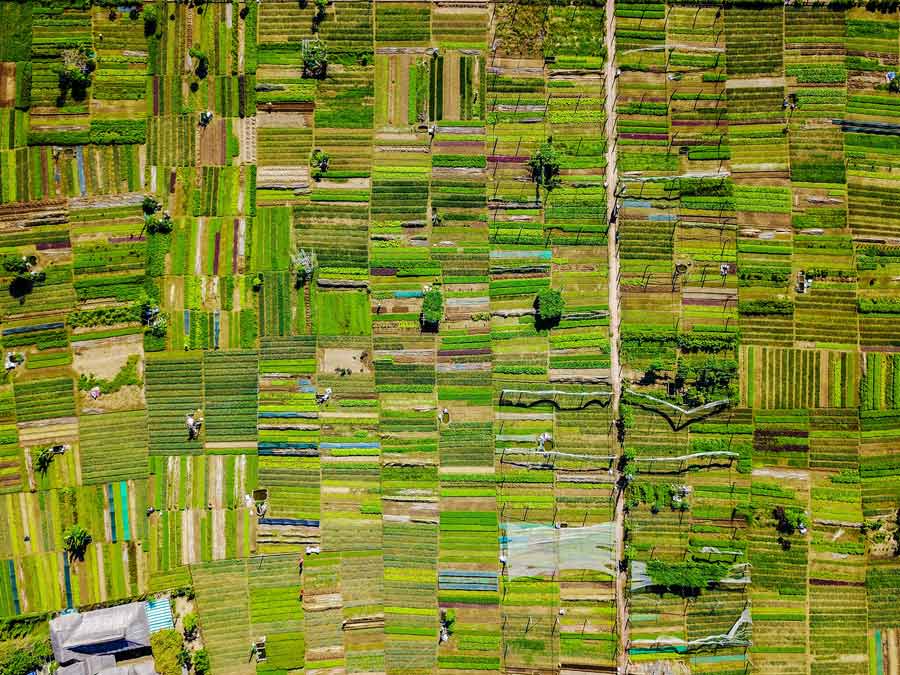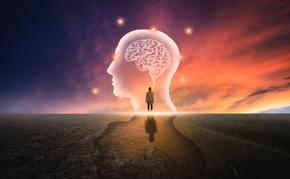The views expressed in our content reflect individual perspectives and do not represent the authoritative views of the Baha'i Faith.
Imagine, if you will, that you are in space looking down on the entire planet Earth, with a vision that allows you to see every single human being and to understand what resides in each mind and heart.
In other words, you suddenly have the perceptive power to look over all of human society, and can seek to identify the ailments from which it suffers.
Just as a doctor examines the symptoms of a patient in order to diagnose an illness, it may help to gaze out at the vista of the seething masses of humanity around the world to understand what ails us.
In one direction bitter enemies engage in warfare, with hapless victims desperately trying to migrate to safety. In another organized crime and corrupt political leaders seek to extract as much wealth as they can from others, regardless of the harm caused. In yet another direction, the rich become ever richer, while the young can no longer find work; the marginalized are ignored and even the middle classes are slowly sinking into poverty.

From their cells come the sounds of the moaning of prisoners of conscience, victims of injustice and those jailed for their beliefs or their efforts for freedom and human rights. You may rightfully ask why you see so much poverty everywhere when the world clearly has enough wealth to meet the needs of everyone. Or perhaps you ask why there is so much fear of strangers, immigrants and the “other” exists, when all people belong to the same human family.
Despite the physical unity brought about by technology, the world is still fragmented into nations, classes, so-called “races,” political parties, labor unions, employers’ federations and all sorts of other competing, exclusionary groups. Most of the people who have grabbed power seem short-sighted, selfish, greedy and materialist, often building their power base using manipulation, fundamentalist or radical agendas, xenophobia and fear.
However, the Baha’i teachings point out, this vision before us doesn’t look totally grim and foreboding—here and there in a valley below we see glimmers of light in the darkness:
All the holy ones of God have tried with heart and soul to spread the light of love and unity throughout the world, so that the darkness of materiality might disappear and the light of spirituality might shine forth among the children of men. Then would hate, slander and murder disappear, and in their stead love, unity and peace would reign. – Abdu’l-Baha, Paris Talks, pp. 119-120.
Some individuals with pure hearts and strong consciences resist the outside pressures and live a life of virtue and goodness. A few neighborhoods, villages and communities have the unity and solidarity necessary to educate their children, giving young people values to live for and the motivation to study to improve their understanding of material and spiritual reality. Aware of their higher or spiritual nature, they share prayers and devotions together and consult together about practical solutions to their problems. Young entrepreneurs start beneficial social enterprises, and even some large corporations ask if there should be a purpose beyond profit. Some scientists devote their lives to improving our understanding of the world and the solutions to our physical problems. Some leaders really do have the welfare of every human being at heart. Kind people selflessly give to others in need. But, despite such actions, these efforts still fall far short of what the world needs to change the present course of society — the fundamental illness remains, with its general vacuum of ethical principles, human values and moral purpose.
To understand this pervasive illness, we need a conceptual framework that can help us comprehend this complex system, within which an expanding humanity tries to live on a shrinking planet Earth with rapidly diminishing resources.
 This framework will help us ask the right questions, and recognize that we have a much higher potential as human beings, as exemplified by some outstanding and exceptional individuals who are widely admired but seldom copied. Surely such behavior would be too hard, would take too much of an effort? Yet, isn’t such action a matter of free choice?
This framework will help us ask the right questions, and recognize that we have a much higher potential as human beings, as exemplified by some outstanding and exceptional individuals who are widely admired but seldom copied. Surely such behavior would be too hard, would take too much of an effort? Yet, isn’t such action a matter of free choice?
In order to find your way out of this valley, you’ll need two sets of tools that will help you succeed on this journey: systems thinking and some fundamental human values.
In a world of increasing specialization and compartmentalization, few people are educated to think about the whole – the ways in which all the individual parts fit together and influence each other. That’s unfortunate, because many of the crises in our society are the result of systems failures.
We usually look first to science and technology for solutions. Science can give us the means, but it does not have all the answers. The products of science can be used as easily for war as for peace, for domination or sharing, for torture or healing, for life or death. Only a strong framework of moral and spiritual values can tell us how to use the tools of science and what kind of a society to build.
This dichotomy reflects our own reality. We have both a rational capacity for scientific thought and an emotional dimension with feelings and beliefs, of which the latter are sometimes far from rational. These two realities coexist both within us and within our society. They can be antagonistic and in conflict, or, ideally, they can learn to live in peaceful coexistence and even build upon a larger whole. One of the first challenges of this voyage is to learn how to bring these two realities into coherence and to appreciate their complementarity. This will allow you to escape from this valley as you journey towards a better world.
Systems Thinking
Perhaps the easiest way to explain a systems approach is to start with an example that we know intimately, even if we have always taken it for granted and not thought much about it: the human body.
A scientist might start by looking at physical properties, such as our weight, size, volume and density, or perhaps chemically at the amounts of elements like carbon, oxygen and nitrogen, or our molecular composition of proteins, carbohydrates, enzymes and water. Biologically we represent a collection of cells, tissues and organs, both our own and perhaps an equal number of cells of microbes and other organisms enveloped within our very skin and performing various functions like breathing and eating. Of course, we did not just appear out of thin air, but are a product of reproduction in the human species, with parents who produced a genetic recombination and gave us life, starting a complex cycle of growth, reproduction, ageing and death in which we help to perpetuate the species from generation to generation.
We could also be viewed in terms of our behaviors and activities. A doctor would consider our state of health and determine the medical treatments required. We are not just a naked body, but may be distinguished by how we dress, how we surround ourselves with buildings and other structures and our ability to invent and use technologies that allow us to do things beyond our own physical capacities. For an educator, we started as a child in whom various skills were developed – like reading and writing – advancing to various spheres of knowledge and professional skills that allow us to contribute to society and to adapt to various conditions and situations. The psychologist would see in us a conscious being (whatever that means) with emotions, different kinds of intelligence, memories and a past history of experiences that influence us in various ways.
A System of Values
We humans also have what could be called a spiritual dimension, made up of our ethics and values, perhaps a religious or cultural tradition, or other various sources of inner motivation.
As social organisms, we do not live in complete isolation. We belong and contribute to many social structures, from our family and community to our nation and even our global society. Nor are we cut off from our surrounding environment. We take in food and drink, release waste and interact in multiple ways with both our natural environment and the city or community that many people over many years have built around us.
This brief summary of each person as a complex system, dependent on the good functioning of all our internal components (themselves complex systems) and, in turn, an individual human being within many other complex social systems that exist at higher levels of organization, shows the challenges and opportunities of a systems approach. As we can see from this example, some of the elements of a systems approach include:
- Seeing things as dynamic and constantly changing, rather than static.
- Understanding the processes at work.
- Looking for causes and effects.
- Exploring interactions and understanding what influences something else within the system.
- Integrating all the different components in order to get a view of the whole.
- Looking for emergent properties that result from the whole system and which might not be predictable just by adding up the parts.
You will find that this systems approach will not only arm you to confront the dangers in the valleys to come on this journey, but will also help you to integrate what you learn in each valley into a deeper understanding of your life-voyage of discovery and achievement.
Arthur Lyon Dahl’s new book In Pursuit of Hope, A Guide for the Seeker, published by George Ronald Books, is available here.

















Comments
Sign in or create an account
Continue with Facebookor